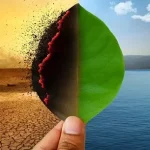India is a subcontinent in the south of Asia, in its large peninsula, it includes the worlds largest and magnificent mountain ranges. Because of its big size and irregular shape like a quadrilateral this large peninsula we called India, yearns to be known as a subcontinent. The vast ocean surrounds India on its East, West and South that protects it from the intruders. While on the North, mountain range of great Himalaya is surrounding this subcontinent from the intruders. Himalaya is the youngest and the tallest mountain range in the world. In India, it offers the home to many states of India such as Himachal Pradesh, Uttaranchal, Kashmir Sikkim and Arunachal Pradesh.
India is a vast country with the total land area of 3.287 million km². India is a very diverse country, the national language of this country is Hindi, but still, every state has its different language and cultures. Hinduism is the main religion that is practiced by the most of the Indians, but they also have many other religions like Sikhism, Muslims, Buddhism, Christens, etc. are also the part of this big and beautiful country. With the population of 132.42 crores, India becomes the worlds second largest populated country. In 2956 the States Reorganisation Commission of India noticed that there are some regions in this country which were not the part of India during the independence. Also, they noticed that some states are not big enough to fit the state model of India. And all these areas are considered as the Union Territories of India.
Both the Government of India and the Union territories of India combine with each other to form a working model of British free India. Now, these Union Territories are administered and ruled by the central government of the Country. In this article, we are going to discuss the name of all the Union Territories of India, but before that let’s find out more about what and how these Union territories are administered.
The Indian President notionally administers the Government of India and Union territories. An Administrator also known as the Lieutenant Governor is chosen by the President, appointed explicitly for a specific Union territory, and then the Lieutenant Governor becomes the head of administration for that particular Union Territory.To make the build, an efficient government these Union territories are subdivided into smaller blocks.
List of Union Territories of India
1. Ladakh
Ladakh is a Union Territory in India, located in the northernmost part of the country. It was formed in 2019 after the Indian government revoked the special status of Jammu and Kashmir and split it into two Union Territories, Jammu and Kashmir and Ladakh.
Ladakh has a total area of 59,146 square kilometers and a population of approximately 289,023 (as per the 2011 Census). It is bounded by two of the world’s largest mountain ranges, the Karakoram in the north and the Himalayas in the south, and is situated at an average altitude of over 3,000 meters above sea level. The region is known for its stunning landscapes, high-altitude lakes, and Buddhist culture.
The main languages spoken in Ladakh are Ladakhi, which is a Tibetic language, and Urdu, which is the official language of the region. The economy of Ladakh is predominantly based on agriculture and tourism, and the region is also strategically important for its proximity to the borders with China and Pakistan.
2. Andaman and Nicobar Islands
With an area of 8249 sq km, Andaman and Nicobar are the groups of the island and the most significant Indian Union territory as well. The climate stays to be humid as both of these islands are on the tropical coast. The citizens of these islands were used to live in the forest and go fishing for their survival. Their rich agriculture industries support the economy of these islands. Paddu is their primary food crop of the area along with coconut.. Other than that crops like oilseeds, vegetables, and many pulses are also grown in this Union Territories of India. Fruits like mango, oranges, banana, sapota, pineapple, and papaya are also easy to grow in this are easy to grow in these areas.
The number of small islands serves as the perfect tourist destination, and that’s why Andaman and Nicobar Islands are quite famous among tourists. They sever a large number of tourist every year, and the islands are slowly developing because of its tourism department. Other than tourism Fisheries industries are also helping with the development process.
To tell you how developed and still eco-friendly Andaman and Nicobar is just remembered that these islands are providing a home to 9 National Parks, 98 Wildlife Sanctuaries, and 1 Biosphere Reserves. The marine life is beautiful and filled with many rare species of plants, their evergreen forests, and sandy beaches attract tourists every year. Jail, Ross Island, and Havelock Island are the most popular tourist destination in Andaman and Nicobar.
3. New Delhi
The capital city of India is the second largest territory of India. Delhi plays a vital role in describing the history of India. It has been there since the 6th century BC, and we can see the reference to this capital city of India in Mahabharat and many other holy tales. Many rulers administered Delhi like Guptas, the Pallavas and the control of this city was passed from one ruler to another. The Mughals were the last people who started ruling over Delhi in the 16th century, and their rule lasted till the early of the 19th century. The Mughals were the one who ruled over Delhi for the longest time. Delhi was not the capital of India since the start. It became the capital city during the British rule when they declared Delhi as the capital in the 19th century. Since then Delhi has become the center of all attractions, and you can say it is one of the most developed states of India. In 1956 Delhi was declared as the Union Territory of India.
Among all the seven Union Territories of India, the National Capital Territory of Delhi got their Legislative Assemblies and government led by Chief Ministers. Hence Delhi is one of the territories that holds, the more democratic power than the other Union territories of India.
As being the National Capital of India, Delhi is well connected to all parts of India by providing the air, rail and road connectivity. Indira Gandhi International Airport (IGI) is the main airport of the city that offers both domestic an international flights to and from Delhi. Not just commercially but Delhi provides a military air base as well. The Hindon airport serves only to the Indian Air Force.
Other than those Indian Railroads are one of the largest railroad networks in the worlds. Offering a dozen railway stations, Delhi makes it easy for its citizens to stay connected with the outer world.
4. Dadra and Nagar Haveli
After getting its freedom from Portuguese on 2 August 1954, Till 1962 it was administered by the Free Dadra and Nagar Haveli Administration. Later in the same year, the administration of Dadra and Nagar Haveli was offered to the Government of India, and since then it has been controlled as the Union Territory of India. With a land area of 491 sq km, Dadra and Nagar Haveli is surrounded by the Gujran and Maharashtra. Their land is fertile for the growth of Paddy crop. This UT is still underdeveloped as 78% of the population is still tribal population. To put it towards the path of development, the Lieutenant Governor sets the highest priority towards the tourism to attract tourists and chances of growth along with it.
5. Puducherry
With an area of 479 sq Km, Puducherry is the fourth largest Union Territory of India is regarding the land area. Established by the French colonies, it is situated in the South of India. Puducherry became the Indian Union Territory in 1954 after being ruled by the French people for more than 137 years. The economy of Puducherry is supported by several small and medium-sized manufacturing industries that manufacture the wood, rubber, plastic products and leather as well. Other than that there are many metals, pharmaceutical, cotton, and food industries. Puducherry is connected with the direct roads and rail roads. While Chennai is the nearest airport to reach Puducherry.
6. Chandigarh
Chandigarh is the capital city of Punjab as after the partition from Pakistan the Indian side of Punjab left with no capital city as Lahore falls into Pakistan. Now Chandigarh is the capital city of Punjab and UT of India as well. Chandigarh is the cleanest city in India, and just like Delhi it also plays an essential role in the Indian history. Chandigarh is a well-developed city that represents the development of India with its modern culture and structure. Unlike Delhi, Chandigargh became the Union territory of India in 1966. Chandigarh doesn’t have lots of space to grow crops that’s why it has the least agriculture industries.
7. Daman and Diu
The last one to rule in Daman and Diu is the Portuguese. After ruling Daman and Diu for 450 years, they became the part of the Indian Union Territory in 1978 and formed one political unit. Although, the Arabian sea separates both the Daman and Diu and there is 600 Km distance between both these places. Representing the relics from the time when it was ruled by the Portuguese, along with the clear blue water and beautiful beaches, Daman and Diu is the lovely tourist destination.
8. Lakshadweep
Situated in the Arabian Sea, Lakshadweep is a group of 27 coral islands. Though only 11 of these islands are inhabited. There is not a lot of documents supporting the history of Lakshadweep. These islands were used to practice Hinduism, but later with the influence of Arab traders, the majority of inhabitant converted into Islamic religion. To dodge the Portuguese, they asked for the help from Raja of Chirakal. After controlled by the Tipu Sultan and the East India Company. All the different islands were merged into one name called ‘Lakshadweep’ in 1956.
Santosh Kumar, the author behind IndiasStuffs.com, is passionate about sharing valuable insights on a variety of topics, including lifestyle, technology, and Indian culture.
Page Contents

